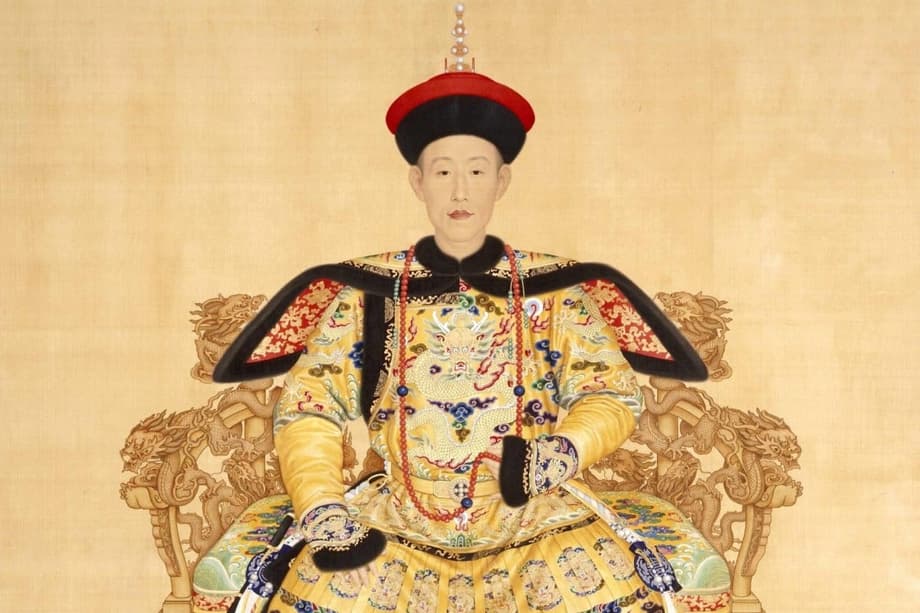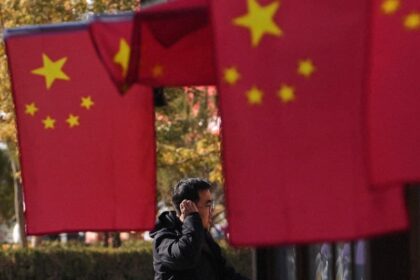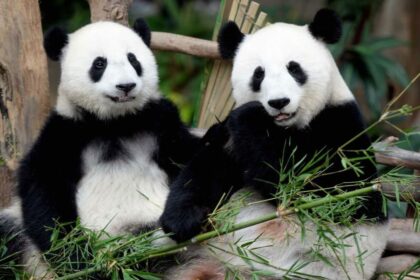A gilded empire and a hard century of change
The Qing dynasty (1644 to 1912) ruled the largest, most populous state on Earth. For generations, stability and prosperity fed a confident court culture and a busy commercial economy. By the early 1800s China produced a large share of global output, with some estimates placing its share near a third of world GDP in 1820. Crafts from porcelain to silk traveled across oceans. Scholarly culture flourished under emperors who prized learning and ritual, and the territory expanded to encompass a vast multiethnic realm.
- A gilded empire and a hard century of change
- How did the Qing become so rich?
- Governing a giant: taxes, money, and limits
- Opium, gunboats, and a treaty system that rewired trade
- Pressure from within: population, elite competition, and rural poverty
- The age of rebellion and the limits of recovery
- Culture at its height
- Why growth stalled
- What the Qing story says about cycles of wealth and crisis
- Key Points
That wealth rested on a broad rural base. Fields expanded, new food crops from the Americas spread, and villages tied themselves to markets through handicrafts and regional trade. At court, Qing rulers blended Manchu and Chinese traditions, preserving the civil service exams and governing with a large, professional bureaucracy. The result was a high growth era often called High Qing, marked by rising populations, low crime, and a tax burden that was light by preindustrial standards.
The same strengths that made the High Qing shimmer carried risks once the world shifted. In the nineteenth century, population growth outpaced land and jobs, the state struggled to finance modern defense, and industrial powers arrived with steam gunboats and different rules of trade. Rebellions erupted and new treaties cut into sovereignty. The fall in 1911 ended two millennia of imperial rule, but it followed a century of strain that began while the empire still looked rich and secure.
How did the Qing become so rich?
Three long reigns anchored the High Qing. Kangxi, Yongzheng, and Qianlong extended the borders, pacified rivals, and kept the granaries full. The court ran a multilingual, multiethnic empire, using the exam system to recruit talent while honoring Manchu customs at the center. The agrarian economy thrived on intensive farming. Southern provinces double cropped rice, northern fields produced wheat and millet, and cash crops such as tea and cotton linked villages to distant markets.
Agriculture, markets, and the silver connection
Rural households mixed farming with side work. Men and women spun and wove cotton, raised mulberry for silk, or hired out for seasonal labor. Surplus moved along rivers and canals to towns and ports. Europe developed a taste for tea, silk, and fine porcelain. To pay for Chinese goods, Western merchants shipped silver from the Americas and India. The inflow of silver complemented Qing money. Large transactions used silver; daily purchases relied on copper cash. The result was deeper commercialization across provinces and steady revenue from land taxes assessed in silver.
Confidence at the top matched the inflow of bullion. When a British embassy sought broader trade in 1793, the Qianlong Emperor sent a careful rebuff in a letter to King George III. He framed it as a matter of ritual, hierarchy, and self sufficiency.
We possess all things. I set no value on objects strange or ingenious.
That view reflected a system still working on its own terms. Chinese artisans innovated inside court workshops and private kilns, while Jesuit artists at court blended European realism with Chinese techniques. Markets grew, but the state kept foreign commerce within tight limits, confining European traders to Guangzhou and a licensed guild of Chinese merchants.
Governing a giant: taxes, money, and limits
The Qing fiscal system was light and decentralized. The crown relied mainly on land and head taxes that were often frozen in nominal terms. Local officials reported collections, built informal surcharges, and worked with gentry elites who mediated between state and village. The approach kept order at modest cost, which helped farmers but constrained the funds available for modern armies, steamships, and railways when those became essential.
Money created its own drag. Silver and copper circulated side by side, but they were not fixed to each other. When silver began to flow out in the 1830s to pay for imported opium, the money supply tightened. Prices fell and tax receipts, fixed in silver, weighed more heavily on peasants. Depression and deflation set in during the Daoguang Emperor’s reign. Later, the court added revenue sources, including the internal transit levy known as Lijin and expanded customs, yet expenditures after wars and indemnities rose even faster. Borrowing by selling bonds faltered because investors doubted repayment from a fragmented treasury.
Opium, gunboats, and a treaty system that rewired trade
Foreign commerce during the eighteenth century followed the Canton system. Western ships anchored at Guangzhou, transacted with a closed guild, and departed when the monsoon allowed. By the early nineteenth century, Britain had a large tea habit and a silver problem. To balance accounts, British firms shipped opium grown in India to Chinese buyers. Smuggling undermined Qing law as addiction spread and silver drained out.
In 1839, the imperial commissioner Lin Zexu launched a crackdown at Humen, seizing and destroying opium. He also wrote to the British crown to press a moral case, noting that in Britain opium was already illegal.
In your own country opium is prohibited under severe penalties.
The crisis escalated into the First Opium War. British firepower prevailed at sea and along the coast. The Treaty of Nanjing in 1842 opened new ports, required compensation, and ceded Hong Kong. Later agreements deepened the foreign presence, granted extraterritorial rights to foreigners, and limited tariff autonomy. The Imperial Maritime Customs Service, led by foreign inspectors, became a crucial revenue source. The changes lowered barriers for global trade but also constrained Qing policy, tying finances to foreign oversight and exposing coastal regions to new competition.
Pressure from within: population, elite competition, and rural poverty
Behind the wars ran deeper social arithmetic. China’s population surged roughly fourfold between 1700 and 1840. Farmland per person shrank. Families subdivided plots and pushed land harder, which eroded soils and increased flood risk. Many households consumed nearly all they produced. High yields per mu no longer translated into large market surpluses, which kept industrial workshops small and limited urban growth. Migration relieved pressure in some places, but it also spread strain to frontiers and river basins.
Ambition outpaced available posts. The examination system drew rising numbers of hopeful scholars chasing a fixed, very small quota of degrees. More candidates studied longer for fewer places. Disappointed gentry youth added to a pool of educated but underemployed men who shaped opinion, joined militias, or rallied to causes. At the same time, the state’s costs climbed. Suppressing unrest, responding to natural disasters, and managing trade deficits taxed a revenue system that had not kept pace with population or with the demands of modern weaponry. The mix of demographic pressure, elite competition, and fiscal stress primed the countryside for revolt.
The age of rebellion and the limits of recovery
The Taiping Rebellion (1850 to 1864) convulsed the Yangtze heartland. Led by Hong Xiuquan, a charismatic religious figure, it built an alternative capital at Nanjing and drew millions into civil war. Casualties ran into the tens of millions and swaths of fertile provinces were devastated. Other uprisings struck in the north and far west. Qing victory depended on regional armies organized by scholar officials such as Zeng Guofan and Li Hongzhang, who relied on local taxes and gentry networks to put men in the field.
After the fires, reformers pressed a Self Strengthening program: arsenals, shipyards, telegraph lines, modern schools, and new bureaus to manage industry and customs. Some enterprises succeeded, yet the state kept most projects inside a traditional framework. Political power remained conservative at the center, and modernization focused on tools more than institutions. A heavy blow came in 1895 when Japan defeated China in the First Sino Japanese War, exposing weaknesses in training, logistics, and finance. The Hundred Days Reform failed to take root. The Boxer crisis of 1900 brought foreign invasion and a punitive indemnity that drained budgets for decades. Late New Policies sought to update law, education, and provincial assemblies, and the court abolished the civil service exam in 1905. The pace of change lagged behind rising expectations. In 1911 a regional revolt spread, and the child emperor Puyi abdicated early the next year.
Culture at its height
Even as pressures mounted, Qing China set standards in art and material culture. Jingdezhen kilns produced porcelains of extraordinary variety for imperial use, domestic markets, and export. Court workshops in Beijing coordinated paintings, lacquer, cloisonne enamel, jade, ivory, and textiles. New enamel colors, including a vivid pink inspired by European objects, entered the palette. European Jesuit painters such as Giuseppe Castiglione worked at court, blending Western perspective with Chinese brushwork to create a distinctive style. Outside the palace, scholar artists reinterpreted earlier masters, while a group sometimes called Individualists used art for personal expression and social commentary.
City life was rich and diverse. Commercial streets advertised wares with painted signs for a population in which many could not read. Tea houses, temples, and guild halls anchored communities. Exports of tea, silk, and porcelain connected these urban scenes to foreign ports. The flow of goods, people, and ideas made the eighteenth century one of China’s most cosmopolitan periods.
Why growth stalled
Long before the dynasty fell, its economy began to lose momentum. Population gains outstripped acreage. Regional markets that had become more integrated in the eighteenth century often pulled apart in the nineteenth century as fighting and banditry increased transaction costs. Subsistence farming spread in some regions. Urbanization slowed. Although the value of domestic food trade rose, most grain and rice never entered markets, which kept labor tied to fields and limited the capital available for factories.
Foreign banks introduced modern finance in treaty ports. Chinese native banks and official reform projects followed with delay. New taxes and customs revenue increased the flow to the center, yet obligations after wars, disaster relief, and indemnities rose faster. The state struggled to standardize currency and regulate exchange between copper and silver. Deflation in the 1830s and 1840s hit farmers and debtors hard, while officials still had to deliver silver quotas. These monetary strains, combined with the cost of security and the loss of tariff autonomy, left too little fiscal space to industrialize at the pace set by Britain, the United States, or Japan.
What the Qing story says about cycles of wealth and crisis
Chinese history contains patterns that repeat across eras. Large empires tend to concentrate resources, and that can widen gaps between elites and the rest. When populations rise faster than opportunities, when more educated young people compete for fewer elite positions, and when governments cannot fund public goods at the scale a changing world requires, stress accumulates. The Qing experienced each of these dynamics while facing an external shock from industrial powers operating at sea and on railways.
Comparisons across time suggest that inequality and extraction often set the stage for unrest. Earlier dynasties fractured when rural burdens grew too heavy or when peripheries felt squeezed. Some scholars argue that after imperial collapses, the everyday lives of many people sometimes improved once taxes fell and local communities rebuilt on their own terms. The nineteenth century in China, however, brought famine, epidemic disease, and mass violence that left deep scars. The transition after 1911 replaced the old system, but building an industrial, sovereign state took decades more.
Key Points
- The Qing dynasty presided over a long period of prosperity, cultural brilliance, and demographic expansion.
- High Qing wealth grew from intensive agriculture, regional trade, and global demand for tea, silk, and porcelain paid for in silver.
- A light, decentralized tax system limited state capacity to fund modern defense and industry when the world changed.
- Opium smuggling, silver outflows, and defeat in the Opium Wars reshaped trade and curtailed sovereignty through unequal treaties.
- Population growth, examination bottlenecks, and rising fiscal burdens raised social pressures across the nineteenth century.
- Civil wars, especially the Taiping Rebellion, devastated key provinces and forced the state to rely on regional armies and new taxes.
- Self Strengthening reforms built arsenals and schools but did not transform institutions fast enough to match foreign rivals.
- Late reforms could not arrest decline; the 1911 Revolution ended imperial rule and began a new political era.












